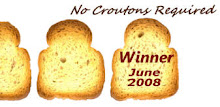The rain continues! It feels very spongy here... I'm loving it. Good for the garden.
In other news....this week The Washington Post is doing a (much overdue) five-part series on childhood obesity.
http://www.washingtonpost.com/wpsrv/health/childhoodobesity/index.html
Today's installment focused on the fact that both suburban and urban children struggle with obesity, but for different reasons. My first instinct with the epidemic of overweight children is to blame the advent of Big Corn and cheap, fake food.
But it’s obviously so much more complicated than that. I do think at some level, it all roots back to a disconnect from the source of food. However, even that problem is made worse by the fact the kids in urban settings have so few opportunities to be outside and play safely. Hard to develop an appreciation for nature when you are worried about being shot at.
If the issue at hand were adult obesity, I would feel more comfortable delving into the intersection of personal choices and obesity. But we are talking about children, and many of their choices are framed by those older than them.
There are some really great community garden initiatives in my city, but I wish there were more. I think that combined with hands-on nutrition and cooking education in schools would be a revelation.
In the meantime, here are some of the more surprising factoids from the articles in the Washington Post:
- For 32 years, the U.S. Women, Infants and Children program subsidized eggs and cheese for poor children, but no vegetables. In 2007, vegetables, fruits and whole grains were added.
- A quarter of teens drink an average of four colas a day, the equivalent of an extra meal.
- A study of 200 neighborhoods showed that white neighborhoods have four times as many supermarkets as African-American ones.
- McDonald's advertised on report cards in Seminole County, Fla., until the Campaign for a Commercial-Free Childhood objected in December.
- A majority of 1- to 2-year-olds eat a sweet a day; only 1 in 10 eat a dark-green vegetable.
What is your community doing to help prevent childhood obesity?

No comments:
Post a Comment